2022 Crystal ball gazing
I usually enjoy this time of year, where the flow of emails into my inbox slows, the office becomes sparse and refreshments are cracked a little earlier in the afternoon. But this year is different. As the clock winds down to the festive break, the hectic pace of work is unabating.
This could be a sign of things to come in the New Year.
Though, it is fair to say COVID hadn’t hindered Centuria’s performance during 2021. We double our real estate platform to $18 billion+ via M&A activity as well as over $2.5 billion worth of transactions. We expanded our breath of operation, acquiring the west coast Australian real estate funds management business, Primewest; further diversified into new asset classes of daily needs retail/large format retail and agriculture; branched into the real estate credit fund market with a 50% stake in what’s now known as Centuria Bass Credit; and increased our team by 43%. All this while spending half the year working from home and dancing between state and international border closures.
So, while reflecting on the year that was, here are some of my predictions for what’s next in 2022.
Interest rates
The Reserve Bank of Australia (RBA) has held the line that cash rates will remain unchanged until 2024 while the Reserve Bank of New Zealand (RBNZ) has already raised its cash rate twice since August 2021, from 0.25% to 0.75%. While NZ can expect more interest rate increases in 2022, the market appears to have already priced in a number of these. In Oz, increased rates could have an impact on demand for assets, however long leases, good tenant covenants and CPI-linked rent reviews could prove winners if inflation behaves as predicted.
Election impact
Already we are hearing noise about the next federal election. So far, it seems both leading parties are aligned on big ticket infrastructure investments. This has a positive impact on the logistics markets – with road, rail and ports benefiting from upgrades. This has a knock-on effect for operators in the industrial real estate sector, which are also continuing to benefit from consumers fast-adopting ecommerce and e-retailing.
Cross border capital appetite
During 2021, the local market was somewhat surprised by the international investment demand for trophy assets and large-scale portfolios. Many transactions were secured as “sites unseen” or via third-party local agents. COVID did not stop the wave of investment opportunities coming to market and, as the international borders open, we are likely to see even more offshore capital inflows, particularly from Singapore, Canada, the US and UK.
Market consolidation
2021 was a record year for M&A activity and our money is on further consolidation throughout the real estate sector in 2022. We can see interest arising from domestic property houses and potentially our Australian superannuation funds.
Industrial properties
During 2021, more than $15 billion of industrial assets were transacted, which is about triple ‘normal’ levels seen between 2018-2020. There is significant investment demand for this sector as investors look for further portfolio diversification, ecommerce adoption increases, as does tenant demand to service consumers, and supply hits a nationwide record low of 1.3%1. This research also showed an additional 350,000sqm of new industrial space is required to be developed each year to meet the forecast growth of ecommerce sales. These are strong indicators for future rental growth in the new year along with the potential for further cap rate compression.
Office assets
The naysayers of office workplaces may be a little sheepish in 2022 as we expect the Australian office markets to bound back to life, especially as vaccination levels rise and Omicron starts to dissipate. However, we can expect office space configurations to change with more space per employee and more ‘collaboration’ areas. During the second half of this year, there has been strong transactional evidence that supports the return to office rhetoric, especially from international investors who have taken advantage of trophy assets that would not normally come to market. Yield compression for well-tenanted offices can be expected throughout 2022 as investment demand for these assets continues. With improving economic conditions, we also expect white-collar employment growth. This, coupled with tenants returning to the office, should result in improved tenant demand through 2022.
Healthcare real estate
This asset class gains more momentum each year. It is a hard sector to enter as a high level of specialisation and understanding of the operators, private insurers, public health and funding models is required. We see strong growth opportunities across the domestic healthcare sector by working with partners to introduce better models of care that deliver cost-effective models along with enhanced treatment and recovery systems. These care models require bespoke properties, which need to be constructed and developed. In particular, we believe there are significant opportunities within the life science, mental health and short-stay hospital sub sectors. The latter, in particular, is ripe for growth if the US market is any indication. This type of healthcare offering has a market size exceeding US$75 billion (2020), with a predicted Compound Annual Growth Rate (CAGR) of 6.1%2 through to 2027. Demand for healthcare real estate will continue to be supported by rising chronic disease, an ageing population, a backlog of elective surgeries that were put on hold during lockdown periods as well as inpatient and outpatient mental healthcare.
Retail
The large format retail (LFR) and Daily Needs Retail (DNR) have been two outstanding, resilient retail subsectors throughout the pandemic, experiencing record low yields. Subregional and regional shopping centres are also expected to improve throughout 2022 and we are starting to finally see some transactional evidence in these subsectors.
Agriculture
According to the Q3 2021 ANREV Australian Farmland Index3, domestic agriculture real estate delivered a 12.72% return on income throughout a 12-month period along with 27% capital growth. We believe this growth trajectory will continue throughout 2022 with forecast sreflecting stable weather conditions, making this asset class attractive for investment. During the New Year, we expect to see more large-scale sale and leaseback opportunities and increased interest from institutional investors. In fact, we believe there will be increased adoption of land leasing as farmers seek to expand their operations under a capital light model, avoiding the large upfront costs of business expansion through property acquisition.
Conclusion
In summary, while 2020 provided a roadmap to navigate through pandemic hurdles, 2021 was met with a resilient attitude to ensure business continuity. The unpredictability of COVID-19, the imminent Federal election and associated market hesitation, supply chain disruptions and skill /materials shortages in the construction sector, present the main foreseeable challenges for 2022. However, we remain cautiously optimistic that high-quality real estate within supply constrained markets, that’s underpinned by strong tenant covenants will continue to perform well in the New Year, delivering compelling returns for investors.
1.CBRE Research 2021 Asia Pacific Real Estate Market Outlook Australia Industrial Logistics – Restart The Uneven Recovery
2. GM Insights: Ambulatory Surgical Centres Market Growth Forecasts 2027 (published September 2021)
3. Based on an index of 64 properties with a market value of $1.8 billion
Related articles
COVID-versary: The pros and cons of the pandemic’s impact on property
by Jason Huljich, Joint CEO
Does it feel like a long-time ago or in the blink of an eye since the #covid19 pandemic took hold in Australia? Monday 20 March marked the three year anniversary of this black swan event.
Real estate as an inflation hedge
by Jason Huljich & Ross Lees
Investors looking at real estate investment may only consider the risks posed by inflation such as rising debt costs, share market investor risks appetite (for A-REITs) and any potential impacts on valuations for property purchases chasing yield. However, investors often overlook positive factors.
